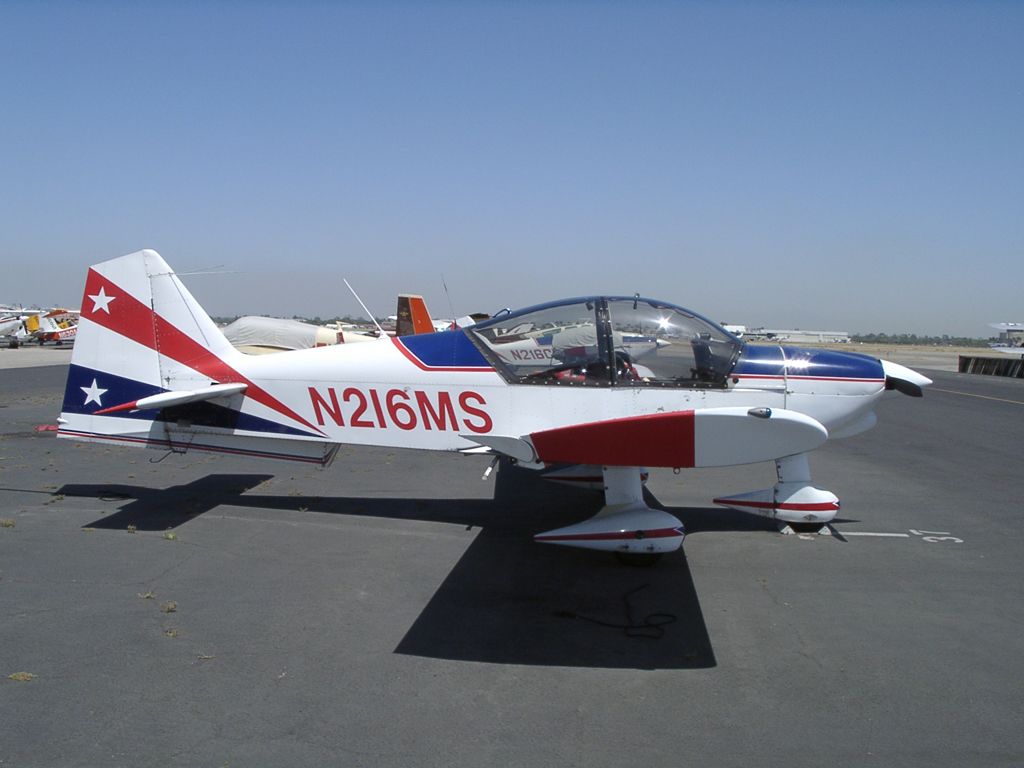COPYRIGHT RACEPICTURES.COM
Source: not edited photo
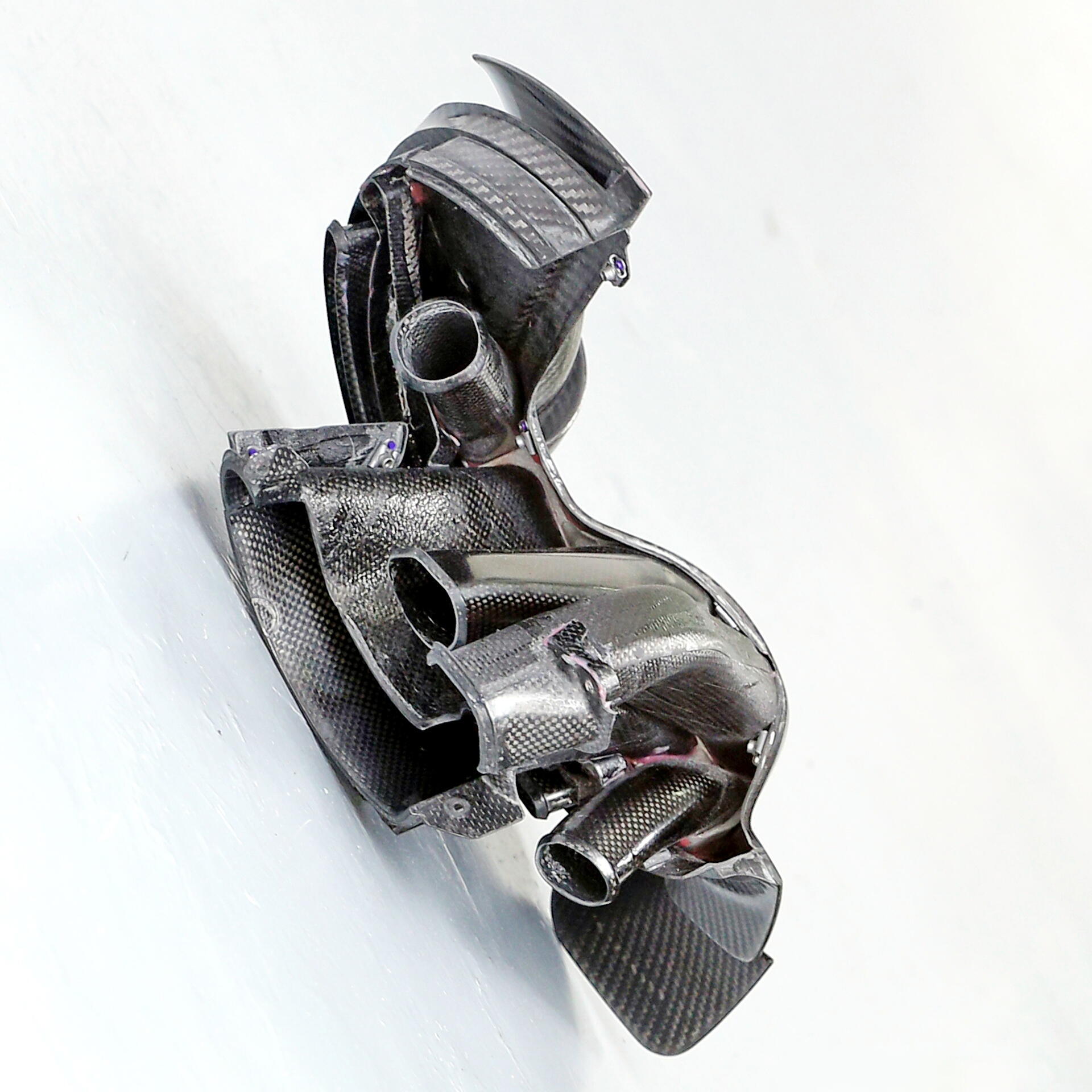


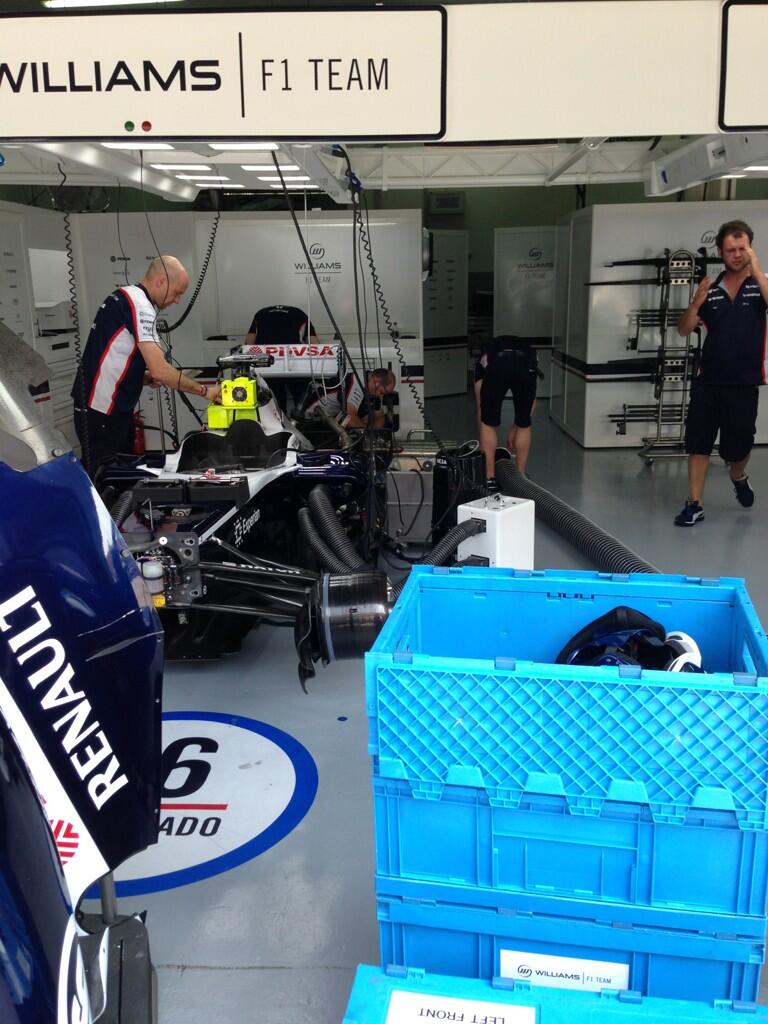
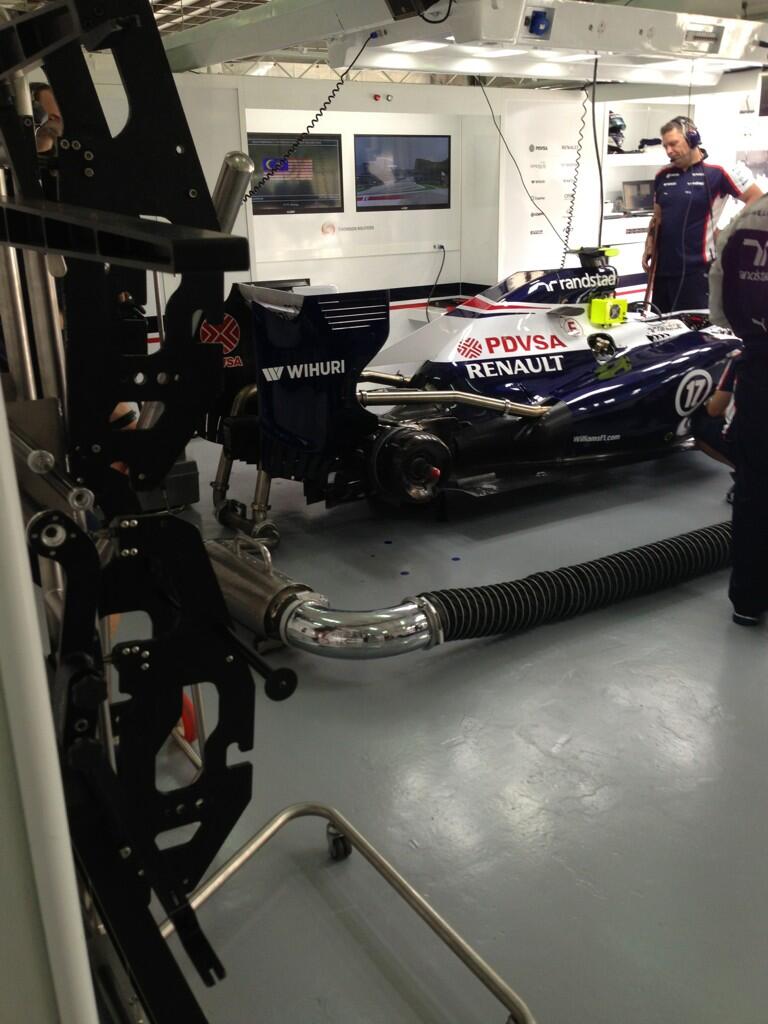

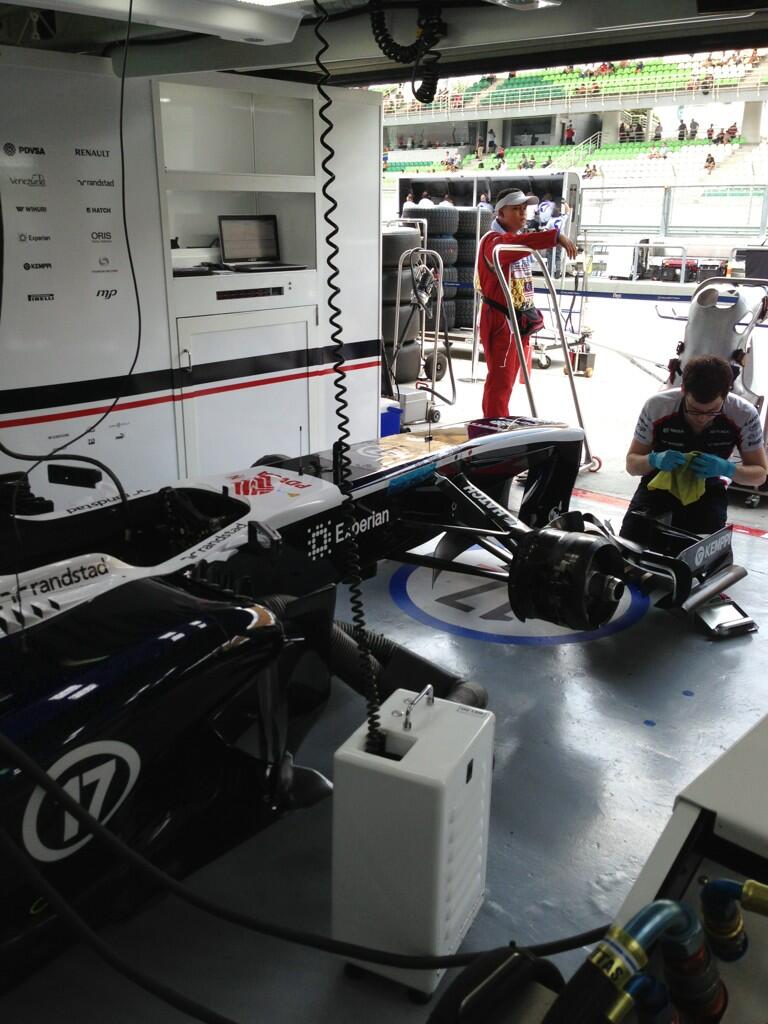
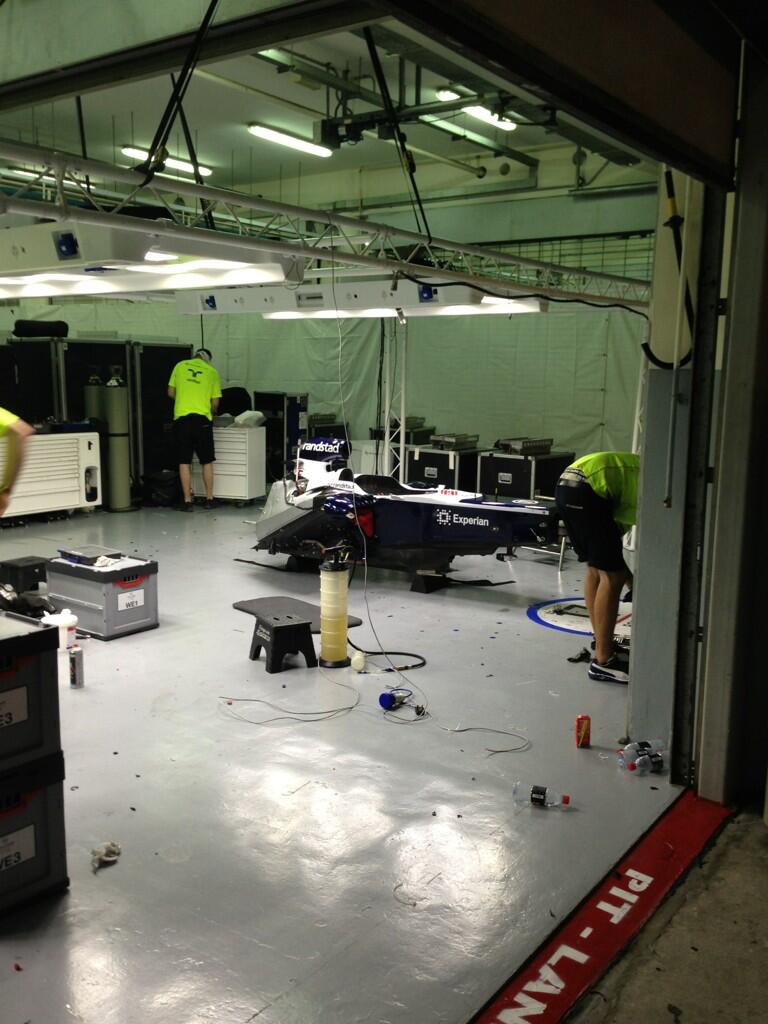
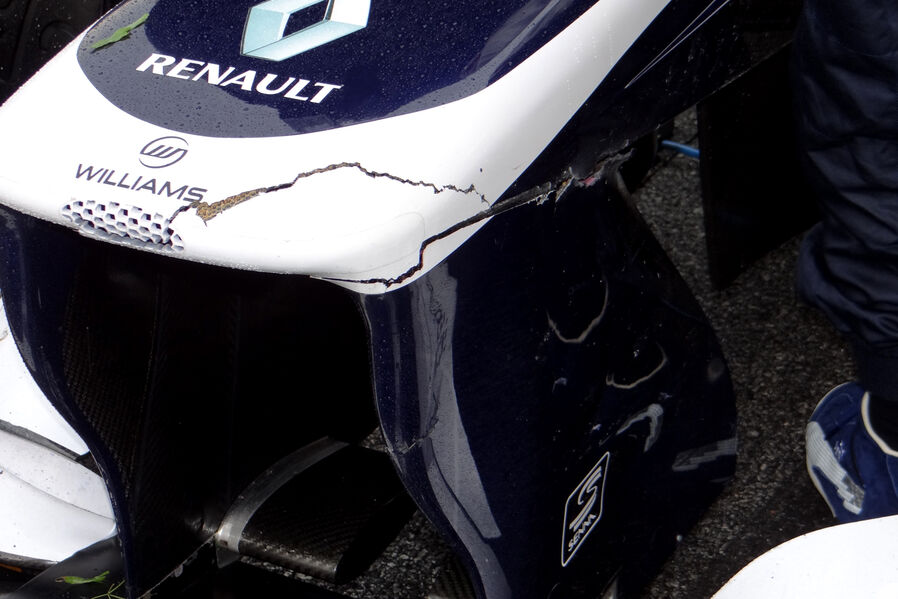

Cause they dont actually have a gearbox to coverpatrik wrote:Looong time lurker and first time poster here.
I've been intrigued as to why Williams is doing so bad this year: with arguably two potentially winning drivers, they're barely scraping for points.
Also, why did they decide to go for a very tight engine airbox with no body to cover the gearbox? No team has done this in the past years, so why do they believe this might give them an advantage?
Thanks!
Its all about clearing out the clutter from the top of the diffuser. This is highly desirable as it brings great benefits in diffuser efficiency. All teams have attempted to clear this area up massively in recent years but williams went the extra mile by engineering the smallest gearbox F1 has ever seen. Almost Moto GP size. Ferrari I believe are getting very close to the williams rear end philosophy this year but they have a good Coanda setup that works well.patrik wrote:Looong time lurker and first time poster here.
I've been intrigued as to why Williams is doing so bad this year: with arguably two potentially winning drivers, they're barely scraping for points.
Also, why did they decide to go for a very tight engine airbox with no body to cover the gearbox? No team has done this in the past years, so why do they believe this might give them an advantage?
Thanks!
Thanks a lot for that in-depth explanation, crystal clear.Coefficient wrote:Its all about clearing out the clutter from the top of the diffuser. This is highly desirable as it brings great benefits in diffuser efficiency. All teams have attempted to clear this area up massively in recent years but williams went the extra mile by engineering the smallest gearbox F1 has ever seen. Almost Moto GP size. Ferrari I believe are getting very close to the williams rear end philosophy this year but they have a good Coanda setup that works well.patrik wrote:Looong time lurker and first time poster here.
I've been intrigued as to why Williams is doing so bad this year: with arguably two potentially winning drivers, they're barely scraping for points.
Also, why did they decide to go for a very tight engine airbox with no body to cover the gearbox? No team has done this in the past years, so why do they believe this might give them an advantage?
Thanks!
The area Williams are struggling with is getting the Coanda Exhaust to provide consistant/predictable performance. It gives good on throttle downforce and decent downforce on corner entry, actually generating understeer on the way in to corners which is one problem they need to balance. However, it is then complicated by the downforce disappearing mid corner causing oversteer. It is this vagueness which makes the car slow as the drivers are cornering tentatively or as Mike Coughlan puts it "at a low potential". The car probably produces higher peak downforce than the FW34 but the unpredictable nature of the downforce means the drivers can't confidently lean hard on the car. This makes it appear slower than it actually should be as the driver not only approaches each corner with caution but also then has to make corrective throttle, brake and steering inputs all of which cost huge chunks of time.
I'll disagree and take a different aero guess. I haven't like their truncated engine cover since day 1. In addition to my gripe about the blunt drop being more prone to separation, I suspect it also allows easier cross car flow when the car is yawing (based on aircraft spin studies with different aft fuselage shapes). This cross car flow would explain the upset of the exhaust coanda flows when the car yaws in a corner. Those now-banned big fins on the aft engine covers would also do a great job of blocking the cross car flow.Coefficient wrote: Its all about clearing out the clutter from the top of the diffuser. This is highly desirable as it brings great benefits in diffuser efficiency. All teams have attempted to clear this area up massively in recent years but williams went the extra mile by engineering the smallest gearbox F1 has ever seen. Almost Moto GP size. Ferrari I believe are getting very close to the williams rear end philosophy this year but they have a good Coanda setup that works well.
The area Williams are struggling with is getting the Coanda Exhaust to provide consistant/predictable performance. It gives good on throttle downforce and decent downforce on corner entry, actually generating understeer on the way in to corners which is one problem they need to balance. However, it is then complicated by the downforce disappearing mid corner causing oversteer. It is this vagueness which makes the car slow as the drivers are cornering tentatively or as Mike Coughlan puts it "at a low potential". The car probably produces higher peak downforce than the FW34 but the unpredictable nature of the downforce means the drivers can't confidently lean hard on the car. This makes it appear slower than it actually should be as the driver not only approaches each corner with caution but also then has to make corrective throttle, brake and steering inputs all of which cost huge chunks of time.
flyboy2160 wrote:I'll disagree and take a different aero guess. I haven't like their truncated engine cover since day 1. In addition to my gripe about the blunt drop being more prone to separation, I suspect it also allows easier cross car flow when the car is yawing (based on aircraft spin studies with different aft fuselage shapes). This cross car flow would explain the upset of the exhaust coanda flows when the car yaws in a corner. Those now-banned big fins on the aft engine covers would also do a great job of blocking the cross car flow.Coefficient wrote: Its all about clearing out the clutter from the top of the diffuser. This is highly desirable as it brings great benefits in diffuser efficiency. All teams have attempted to clear this area up massively in recent years but williams went the extra mile by engineering the smallest gearbox F1 has ever seen. Almost Moto GP size. Ferrari I believe are getting very close to the williams rear end philosophy this year but they have a good Coanda setup that works well.
The area Williams are struggling with is getting the Coanda Exhaust to provide consistant/predictable performance. It gives good on throttle downforce and decent downforce on corner entry, actually generating understeer on the way in to corners which is one problem they need to balance. However, it is then complicated by the downforce disappearing mid corner causing oversteer. It is this vagueness which makes the car slow as the drivers are cornering tentatively or as Mike Coughlan puts it "at a low potential". The car probably produces higher peak downforce than the FW34 but the unpredictable nature of the downforce means the drivers can't confidently lean hard on the car. This makes it appear slower than it actually should be as the driver not only approaches each corner with caution but also then has to make corrective throttle, brake and steering inputs all of which cost huge chunks of time.
"
Yes, I feel this is also a factor in their woes and often wondered why they never used the free space created.by the tiny gear box to develop some useful bodywork above it.
But, as I said, that's just a different aero guess. Without the teams' CFD and tunnel studies, we're just taking more or less educated guesses.

Williams might have been surprised by its early season struggles, but the team is upbeat that it does at least have some answers as to where it has gone wrong.
After a return to form last year that peaked with its Spanish Grand Prix victory, the Grove-based outfit came into 2013 feeling that it was well-placed to build on the momentum.
Instead, it was left baffled by a lack of performance in Australia, where Pastor Maldonado labelled the car 'undriveable' and said the team was back to its dark days of 2011.
Technical director Mike Coughlan suspects that the biggest issue is sorting out the exhaust area of the car.
Having only started experimenting with the in-vogue Coanda exhausts at the final race of last year in Brazil, Williams came late to the party. And the difficulties even a manufacturer team like Mercedes had with the concept showed that getting it right is not the work of the moment.
"We didn't have Coanda in 2012, but we ran it in Brazil," explained Coughlan. "We could see the potential, but I was very nervous about it as there was a lot of work to do."
One of the difficulties in getting Coanda to work properly is that the area of hot exhaust gases is so complicated and can only be mastered with top level computer simulation facilities.
"It's not something you can do particularly well in the windtunnel because you have to understand the transition from low [car] speed but high exhaust flow, to high speed and low exhaust flow.
"You certainly see huge potential there because sometimes you are checking floor pressures and you think 'wow'. But then out on track the tyre is moving around, and the yaw rate is changing.
"But we can see a direction and I think we can enhance it in time for the next race."
Coughlan has already admitted that the team may consider the radical step of reverting to its 2012 exhausts until it masters the Coanda.
And the steps forward that will come from getting on top of exhausts go beyond simple downforce points - because it is as much about driver confidence under braking and cornering as well.
"We need to go away and get a more consistent platform for the driver," said Coughlan. "As soon as you have a situation where there is a loss of downforce on corner entry, then the driver is a bit spooked, so he corners at low potential.
"Although you can show him he has a lot more grip now, the problem is he doesn't feel confident. We have given the drivers a difficult platform to use."
While sorting out the exhausts is unlikely to be the work of the moment, Williams does at least have some time to get it sorted.
It has already pencilled in some aero testing, and despite its issues it sees no reason why it cannot be a regular challenger for points in a campaign where the top four teams appear to have stepped clear of the midfield.
"We have a straightline test booked before Barcelona for two days which we will do, and we are gearing up for some tests which will open up what we are talking about," explained Coughlan.
"We have seen enough pointers here and in the tunnel to know that if we can fix something we will open up a great deal of potential. We think fundamentally we have a car that can be in the lower reaches of the top 10."
While such a target may not be as high as it had hoped over the winter, it is at least a step away from the doldrums that Maldonado feared at the very first race.
Coefficient wrote:...Yes, I feel this is also a factor in their woes and often wondered why they never used the free space created.by the tiny gear box to develop some useful bodywork above it....
Yup. And if I had a 5 minute consulting job with Williams about this (Ha Ha and I'm currently out of work!), I'd advise them to not go back to the 2012 car, but instead try adding a sharp edged strake above the gearbox, similar to the dorsal and ventral strakes on this Cessna and Robin ahead of their vertical tails as a means of reducing the cross-car flow:roadie wrote:Yaw is mentioned here..."You certainly see huge potential there because sometimes you are checking floor pressures and you think 'wow'. But then out on track the tyre is moving around, and the yaw rate is changing....

